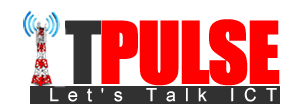In an age of constant distraction and ceaseless notifications, finding time for concentrated, undisturbed work can seem like an elusive dream. Yet, understanding the difference between deep and shallow work and effectively managing the two is essential for maximizing productivity and achieving professional success. Let’s delve into these concepts and explore practical strategies to track and optimize our deep-to-shallow work ratio.
Defining Deep Work
Deep work, a concept popularized by Professor Cal Newport in his book “Deep Work: Rules for Focused Success in a Distracted World,” refers to professional activities performed in a state of complete concentration, without distractions. It’s cognitively demanding, pushing us to our mental limits, and it often generates significant value in our professional life.
The time we invest in deep work allows us to create new value, improve our skills, and deliver high-quality results. It’s during these periods that we often do our most innovative and impactful work. Whether you’re a designer, writer, programmer, or scientist, it’s the time you dedicate to deep work that will most likely define your professional success.
Understanding Shallow Work
On the other side of the spectrum is shallow work, which involves non-cognitively demanding logistical tasks performed while distracted. Examples of shallow work include checking emails, attending meetings, and other administrative tasks. While these tasks are necessary, they do not create much new value and can often be completed even when we’re mentally fatigued.
The Significance of the Deep-to-Shallow Work Ratio
The key to enhancing productivity and propelling professional growth is not to eliminate shallow work entirely but to manage it effectively and prioritize deep work. This is where the deep-to-shallow work ratio comes in.
By monitoring the proportion of time we spend on deep versus shallow work, we can gain insights into our work habits and take steps to optimize our productivity. The right ratio will differ from person to person, depending on the nature of their role and personal working style. However, for most professionals, increasing the proportion of time dedicated to deep work is beneficial.
Strategies for Tracking Your Deep-to-Shallow Work Ratio
Time Blocking
Time blocking is a method of scheduling that involves assigning specific time slots for different types of tasks throughout the day. By setting aside a designated time for deep work and for shallow tasks, you can track the amount of time spent on each type of work and ensure that deep work gets the focus it deserves.
Digital Tools
There are several digital tools available to help you track your time more effectively. Apps like RescueTime, Toggl, and Kimai can provide valuable insights into how you’re spending your time and help you maintain a healthy deep-to-shallow work ratio.
Manual Logging
For those who prefer a non-digital approach, manual logging can be an effective way to track your time. Keeping a journal of your activities and their duration can provide you with a clear picture of your deep-to-shallow work ratio.
Strategies for Optimizing Your Deep-to-Shallow Work Ratio
Prioritize and Plan Your Deep Work
Recognize when you do your best deep work. Are you a morning person, or do you hit your stride in the afternoon? Once you understand your peak performance times, block off that period for deep work.
Limit Distractions
In the digital age, distractions are only a click away. Consider using website blockers or do-not-disturb modes on your devices during your deep work sessions. Physical clutter can also be a distraction, so keep your workspace clean and organized.
Batch Shallow Tasks
Rather than sporadically addressing shallow tasks throughout the day, try batching them into specific time slots. This approach can help prevent these tasks from encroaching on your deep work time and interrupting your flow state.
Set Clear Boundaries
Respect your deep work time by setting clear boundaries with colleagues and clients. Let them know your availability for meetings or calls, ensuring these do not interfere with your scheduled deep work sessions.
Practice Mindfulness and Rest
Rest is crucial for sustaining deep work. Mindfulness practices, like meditation, can help improve your ability to concentrate and engage in deep work. Prioritize sleep and downtime to ensure you can bring your full cognitive capabilities to your deep work sessions.
Conclusio
The modern workplace is awash with potential distractions that can lure us into a cycle of perpetual shallow work. However, by understanding the difference between deep and shallow work and effectively tracking and optimizing our deep-to-shallow work ratio, we can reclaim our productivity and do work that truly matters.
Indeed, it’s not about working longer hours, but about making the hours we work count. By strategically incorporating deep work into our routines and effectively managing shallow work, we can achieve more, hone our skills, and find greater satisfaction in our professional lives. So, why not start tracking your deep-to-shallow work ratio today and see the difference it can make?
Babajide Olowookere is a Visual Storyteller, Senior Graphic Designer, Bringing Brands to Life




